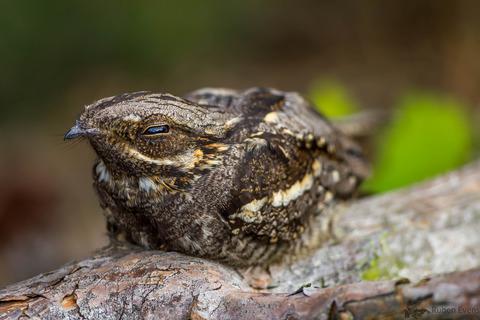当前位置:
X-MOL 学术
›
Anim. Conserv.
›
论文详情
Our official English website, www.x-mol.net, welcomes your
feedback! (Note: you will need to create a separate account there.)
Improved ecological insights commission new conservation targets for a crepuscular bird species
Animal Conservation ( IF 2.8 ) Pub Date : 2020-10-07 , DOI: 10.1111/acv.12650 R. Evens 1, 2 , A. Jacot 1 , T. Artois 3 , E. Ulenaers 4 , T. Neyens 5, 6 , L. Rappaz 1 , C. Theux 1 , Jean‐Nicolas Pradervand 1
Animal Conservation ( IF 2.8 ) Pub Date : 2020-10-07 , DOI: 10.1111/acv.12650 R. Evens 1, 2 , A. Jacot 1 , T. Artois 3 , E. Ulenaers 4 , T. Neyens 5, 6 , L. Rappaz 1 , C. Theux 1 , Jean‐Nicolas Pradervand 1
Affiliation

|
Knowledge on species’ ecological requirements is the key to an effective evidence-based conservation. An adaptive approach can refine management recommendations following the outcomes of previous actions or as improved scientific knowledge about a species’ ecology becomes available. Following severe population declines the majority of the Swiss European Nightjar (Caprimulgus europaeus) population is now restricted to a small core area in the canton of Valais, despite the local application of evidence-based restoration measures to the breeding habitats. The habitat use of this crepuscular bird species is presumed to be restricted to semi-open oak-pine scrublands and rocky steppe. By deploying miniature GPS loggers we assessed the spatial and habitat selection of 42 individuals (25 individuals in 2018 and 30 individuals in 2019; comprising 13 redeployments between years) in five study sites in the canton Valais. We highlight the importance of using fine-scaled movement data to obtain insight into complex multi-scale habitat requirements of a species. Nightjars used multiple habitats, indicating the importance of complementary resources to breed (e.g. open forest and shrub) and to forage (e.g. semi-extensive grasslands and vineyards). The connectivity between these resources was influenced by habitat configuration and composition. Given these new insights for future conservation strategies, our results also suggest that national-level land use changes, mainly due to agricultural intensification processes, have contributed to the long-term population declines in Switzerland. We therefore consider our result in the context of knowledge gaps for species that exploit complementary habitats and the potential shortcomings for conservation planning on discrete species showing complex ecological requirements.
中文翻译:

改善生态洞察力为黄昏鸟类物种制定新的保护目标
了解物种的生态需求是有效的循证保护的关键。适应性方法可以根据先前行动的结果或随着有关物种生态学的科学知识的提高而改进管理建议。在人口严重下降之后,大多数瑞士欧洲夜鹰 ( Caprimulgus europaeus)尽管当地对繁殖栖息地采取了基于证据的恢复措施,但人口现在仅限于瓦莱州的一个小核心区域。据推测,这种黄昏鸟类的栖息地仅限于半开放的橡松灌木丛和岩石草原。通过部署微型 GPS 记录器,我们评估了瓦莱州五个研究地点的 42 个人(2018 年为 25 个人,2019 年为 30 个人;包括年份之间的 13 次重新部署)的空间和栖息地选择。我们强调使用精细尺度的运动数据来深入了解一个物种复杂的多尺度栖息地需求的重要性。Nightjars 使用多个栖息地,表明互补资源对繁殖(例如开阔的森林和灌木)和觅食(例如 半大草原和葡萄园)。这些资源之间的连通性受栖息地配置和组成的影响。鉴于这些对未来保护战略的新见解,我们的结果还表明,主要由于农业集约化过程导致的国家级土地利用变化导致了瑞士人口的长期下降。因此,我们在利用互补栖息地的物种的知识差距以及显示复杂生态要求的离散物种的保护规划的潜在缺陷的背景下考虑我们的结果。主要是由于农业集约化进程,导致了瑞士人口的长期下降。因此,我们在利用互补栖息地的物种的知识差距以及显示复杂生态要求的离散物种的保护规划的潜在缺陷的背景下考虑我们的结果。主要是由于农业集约化进程,导致了瑞士人口的长期下降。因此,我们在利用互补栖息地的物种的知识差距以及显示复杂生态要求的离散物种的保护规划的潜在缺陷的背景下考虑我们的结果。
更新日期:2020-10-07
中文翻译:

改善生态洞察力为黄昏鸟类物种制定新的保护目标
了解物种的生态需求是有效的循证保护的关键。适应性方法可以根据先前行动的结果或随着有关物种生态学的科学知识的提高而改进管理建议。在人口严重下降之后,大多数瑞士欧洲夜鹰 ( Caprimulgus europaeus)尽管当地对繁殖栖息地采取了基于证据的恢复措施,但人口现在仅限于瓦莱州的一个小核心区域。据推测,这种黄昏鸟类的栖息地仅限于半开放的橡松灌木丛和岩石草原。通过部署微型 GPS 记录器,我们评估了瓦莱州五个研究地点的 42 个人(2018 年为 25 个人,2019 年为 30 个人;包括年份之间的 13 次重新部署)的空间和栖息地选择。我们强调使用精细尺度的运动数据来深入了解一个物种复杂的多尺度栖息地需求的重要性。Nightjars 使用多个栖息地,表明互补资源对繁殖(例如开阔的森林和灌木)和觅食(例如 半大草原和葡萄园)。这些资源之间的连通性受栖息地配置和组成的影响。鉴于这些对未来保护战略的新见解,我们的结果还表明,主要由于农业集约化过程导致的国家级土地利用变化导致了瑞士人口的长期下降。因此,我们在利用互补栖息地的物种的知识差距以及显示复杂生态要求的离散物种的保护规划的潜在缺陷的背景下考虑我们的结果。主要是由于农业集约化进程,导致了瑞士人口的长期下降。因此,我们在利用互补栖息地的物种的知识差距以及显示复杂生态要求的离散物种的保护规划的潜在缺陷的背景下考虑我们的结果。主要是由于农业集约化进程,导致了瑞士人口的长期下降。因此,我们在利用互补栖息地的物种的知识差距以及显示复杂生态要求的离散物种的保护规划的潜在缺陷的背景下考虑我们的结果。











































 京公网安备 11010802027423号
京公网安备 11010802027423号